A group of hill farmers has created a pioneering environmental co-operative to protect against the effects of climate change and boost wildlife, alongside sustainable livestock production.
Peakland Environmental Farmers (PEF) has 54 farmers on board, covering over 28,000 hectares of upland in the Peak District National Park.
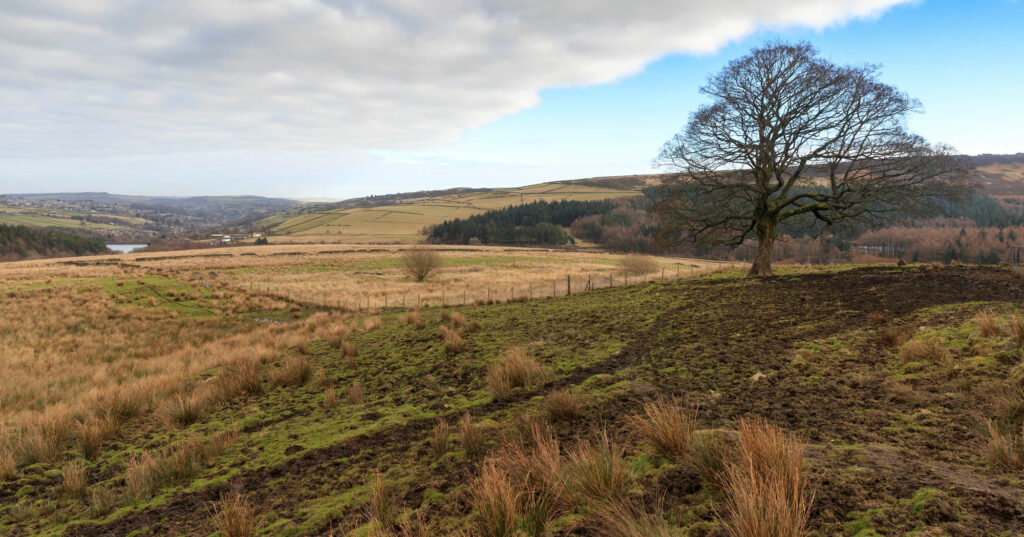
The innovative collective will enable farmers and landowners to protect and enhance the natural environment in the Peak District, and offset losses from the withdrawal of existing farming support schemes. It will do this by seeking investment from public and private partnerships, combining ELMS (the new agri-environment scheme for farmers) agreements with environmental offset trades and other sources of green finance.
Conservation work undertaken by the members includes hedgerow planting, protection of water courses, conservation of species-rich habitats, enhancing soil health, sustainable game management, creation of wildlife ponds, peatland restoration and rewetting, and reducing the impact of invasive species such as bracken.
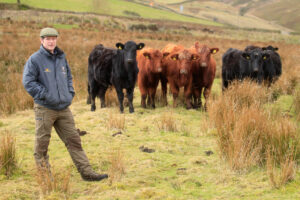
James Howard, of Lane Farm in the village of Holme, can trace his family back through 16 generations farming a mixed upland landholding, with native breeds of sheep and cattle. He said: “We are proud of the way we produce food sustainably while protecting the natural environment. Joining forces offers an opportunity to make people aware of the benefits of environmentally-focused farming and to deliver these outcomes across a larger area. The Peak District is celebrated for its natural beauty, but many people don’t realise that our approach to farming has played a major part in protecting and enhancing this landscape.
“Going forward, we also have a role to play in ensuring that schemes devised by policymakers are workable and will achieve their objectives – farmers have the experience to know what works in any particular landscape so we can make an enormous contribution to the benefits we all want to see.”
The loss of agricultural subsidies will have a major impact on the farming community, and within this area of the Dark Peak and South West Peak all traditional funding will have disappeared by the end of 2027, leaving farmers very much in the red.
The first funding cuts are being experienced now, and 50 per cent of the payment will be gone by 2024.
The PEF has been convened with the help of the Game & Wildlife Conservation Trust and is supported by the Moorland Association and NFU.

Teresa Dent, Chief Executive of the Game & Wildlife Conservation Trust, said: “The fact that over 50 farmers and land managers have expressed interest in joining the PEF is a wonderful testament to their commitment to deliver really good environmental outcomes alongside sustainable farming and food production. The GWCT is delighted to work with these farmers, many of whom are already in two very successful Farmer Clusters. With the Basic Payment Scheme reducing to 50% by 2024 and gone completely by the end of 2027, it will be vital to find new sources of income to allow the farmers to afford to do this environmental work. That’s what the PEF is all about: to put the farmers in the best position to deliver good environmental outcomes and to be fairly rewarded for doing that. It’s a win-win for the environment and for a financially viable rural economy.”
The goals set out by the government as future priorities for farming include: biodiversity net gain, carbon storage, provision of clean water, wildfire risk mitigation, and natural flood management. The group believes its members can and will make a major contribution to delivery of these public goods.
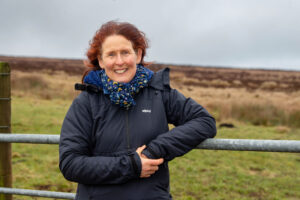
Chloe Palmer, a member of Peakland Environmental Farmers and facilitator for the Hope Valley and Bradfield Farmers’ groups, said: “Two of the clear benefits of land management in the Peak District are clean water and protection of habitats. We have some of the cleanest rivers in England in this area, and we have high-quality habitats providing a haven for many species of birds, including red-listed waders. By the end of this season, farmers in the Hope Valley and Bradfield area will have planted seven kilometres of hedgerows in the past five years – an important habitat for birds, small mammals, insects and amphibians, and also a means to capture carbon. The landscape here has always benefited from low-intensity, sustainable farming and game management, which has resulted in the species-rich landscapes we see today. Soil health is a key priority for our farmer groups and many farmers have used aerators to improve soil health and help reduce water run-off.”
The area covered by the group coincides with the National Character Areas defined by Natural England. Much of the land is designated as either a European Special Protection Area, a Special Area of Conservation, or a Natural England Site of Special Scientific Interest, whether for rare wildlife, plants or landscape features.
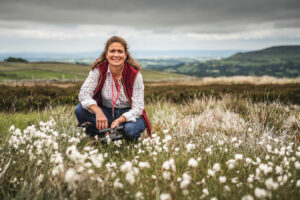
Amanda Anderson, Director of the Moorland Association, said: “Many upland landowners are already managing the land in a way that benefits all of society, as identified by government, but they haven’t necessarily catalogued everything they do to look after the land and its wildlife. Ministers recognise that the uplands have unique and abundant wildlife that needs to be protected as well as enhanced. There are sustainable populations of birds in many areas of the Peak District, such as curlew, lapwing and golden plover, which are in serious decline elsewhere. Working together across this huge area of land, we can establish a baseline of the species that are doing well and work jointly on steps that will further protect many of our most-loved rare species.”
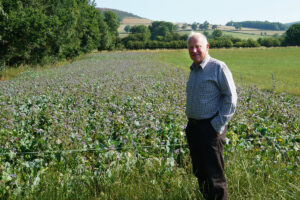
Geoff Eyre of Mill Farm in Derbyshire said: “Like a lot of the farming families in the Hope Valley, I can trace my ancestors back hundreds of years in this area. I am still farming some of the same land they did and I walk in the woods they planted – as well as woods I planted some 40 years ago. My grandchildren planted another 7,000 trees during the Covid lockdown so woodland is not a new flavour on my farm, and I know many other farmers that have planted hedges and trees and restored drystone walls in their lifetime without any real recognition.
“The creation of PEF is being accepted readily by what has been the quiet voice of hard-working farmers needing an opportunity to show firstly what they have already achieved and also the need for future incentives so they can turn their practical skills to any task on the land, be it peat restoration, maintaining wildlife habitats, woodland, hedges, carbon storage, or increasing wildlife. I know the huge numbers of visiting public adore the farm-created landscape, and it’s important that the jigsaw of family farms remain viable, to encourage a younger generation to have their voice, coupled with actions that show results on the ground. An annual farm income for nature recovery would help to preserve this highly designated landscape, alongside producing high-quality food.”

I am delighted by this news and really hope that you can get this across to the “Derbyshire Wildlife Trust” of which I am a member for, their whole principle is about re-wilding WITHOUT recognition of the work that the farming community puts in.
As an active member of a shoot and a local pest control person for farms here in the DE55 area I know how much farmers do and have failed almost completely to encourage the DWT to work with/engage with the GWCT, BASC, CA etc as they are so dismissive of the shooting and farming community.
I have planted 1000 trees bushes and hedges over 2 years.It would be advantageous if the public could be somewhat restricted from rambling during bird breeding season to help plovers and curlew in my area,also keeping foxes and badgers to a minimum.
If this were to be replicated or extend to The White Peak we and a number of other farmers would be interested in forming a group.
please do not send details of The White Peak farmers Facilitation Group with which we are very familiar
Hi Just wanted to reach out and say what a great job you guys are doing..plse do let us know if require any further support from us at the CLA.
https://www.cla.org.uk/news/sponsored-funding-available-shovel-ready-biodiversity-projects/
I agree with Hague. The best year for ground nesting birds was during the Foot & Mouth countryside lockdown period. Unrestricted ‘Right to Roam’ might sound good but not for certain bird species. I manage a riparian habitat removing invasive species and planting certain trees and shrubs plus wildflowers in a part of the Peak District area. A lot of environmental work is carried out behind the scenes for which a large amount of the non-rural population remains totally unaware.